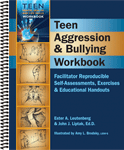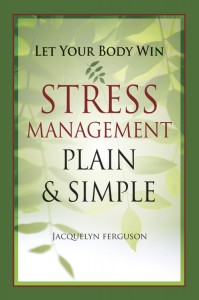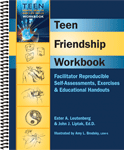 Book Release
Book Release
Whole Person Associates
PHONE 218.727.0500
FAX 218.727.0505
WEB http://www.wholeperson.com
E.MAIL books@wholeperson.com
CONTACT: Carlene Sippola
FOR IMMEDIATE RELEASE
Facilitator Reproducible Self-Assessments, Exercises & Educational Handouts
By John J Liptak, EdD and Ester Leutenberg
Whole Person Associates announces publication of The Teen Aggression & Bullying Workbook: Facilitator Reproducible Self-Assessments, Exercises & Educational Handouts by John J Liptak, EdD, and Ester Leutenberg. Today’s newspapers, websites, and social sites are full of discussions about how to prevent the aggression and bullying that occurs with greater and greater frequency everywhere from playgrounds to cyberspace. It can disrupt families, workplaces, and communities. As this problem continues to grow, mental health professionals are searching for proven ways to reach troubled teens. The Teen Aggression & Bullying Workbook provides just that.
The Teen Aggression & Bullying Workbook is divided into six sections, each of which includes:
- assessment instruments
- activity handouts
- quotations to provide insight and promote reflection
- reflective questions for journaling
- educational handouts to enhance instruction
Mental health professionals, counselors, teachers, and parents will use these tools to help teens explore violence motivation, environmental aggression, are you (the teen) being bullied, are you a bully, and how you would likely respond if you see bullying behavior. The final section addresses depression and suicide. It includes a detailed questionnaire, idea-prompting lists, and relevant journal questions designed to lead to productive in-depth discussions about how problems arise and how they can be solved.
The Teen Aggression & Bullying Workbook: Facilitator Reproducible Self-Assessments, Exercises & Educational Handouts is one of a series of 12 books covering mental health and lifestyle issues familiar to all professionals working with teens. Being released concurrently are: The Teen Friendship Workbook and The Teen Anger Workbook.
Teen Aggression & Bullying Workbook
Facilitator Reproducible Self-Assessments, Exercises & Educational Handouts
Written by: John J Liptak, EdD and Ester Leutenberg
No. of pages: 132
Softcover: Price $49.95
ISBN: 978-1-57025-252-5
Publication date: 2011
About the Authors
John J. Liptak, EdD, frequently conducts workshops on assessment-related topics. He has written three books on career-related topics which have been featured in numerous newspapers including The Washington Post, The Pittsburgh Post-Gazette and the Associated Press. His work has also been featured on MSNBC, CNN Radio, and on the PAX/ION television series, “Success without a College Degree.” John has many years of experience in providing counseling services to individuals and groups in a variety of settings including job training programs, correctional institutions, and colleges and universities. In addition, John has ten years of teaching experience as
an assistant professor. With Kathy Khalsa and Ester Leutenberg, he has written three other comprehensive books for teachers and counselors to use with their students and clients: The Self-Esteem Program, The Social Skills Program, and The Stress Management Program: Inventories, Activities & Educational Handouts. John and Ester Leutenberg continue to co-write books to add to their Mental Health & Life Skills Workbook series, published by Whole Person Associates as well as a series of 12 books addressing teen mental health issues.
Ester A. Leutenberg has worked in the mental health field for many years as a publisher, author, and advocate for those suffering from loss. She personally experienced a devastating loss when her son Mitchell, after struggling with a mental illness for eight years, died by suicide in 1986. Soon after, as a way of both healing and helping others, Ester co-founded Wellness Reproductions & Publishing with her daughter Kathy Khalsa and began developing therapeutic products that help facilitators help their clients. Ester is the co-author of the SEALS series for teen-agers, Life Management Skills series for adults and Meaningful Life Skills for older adults, as well as a variety of therapeutic card games, board games, and posters. Ester has co-written GriefWork —Healing from Loss, The GriefWork Companion, and Creating a Healthy Balanced Life.
Ester and John have co-written the Mental Health & Life Skills Workbook Series, the Teen Mental Health & Life Skills Workbook Series and are currently working on a Coping Workbook Series, all published by Whole Person Associates.
About the Illustrator
Amy L. Brodsky, LISW-S, has worked assisting children and adults in psychiatric crisis. She is well known for her creative illustrations of the Emotions product line, over 35 therapeutic books, including the Life Management Skills and SEALS series, the een Relationship Workbook, Crossing the Bridge, GriefWork—Healing from Loss, The GriefWork Companion, Creating a Healthy Balanced Life, and the Liptak/Leutenberg Workbook series.
Like this:
Like Loading...

 Maintaining healthy relationships requires contact skills which help you meet others and stay in touch. Expanding social skills isn’t easy for everyone. Some are shy and some are extroverted. Most of us are somewhere in between. For those who are shy, try to keep in mind that no one is born with contact skills; we learn them as we go.
Maintaining healthy relationships requires contact skills which help you meet others and stay in touch. Expanding social skills isn’t easy for everyone. Some are shy and some are extroverted. Most of us are somewhere in between. For those who are shy, try to keep in mind that no one is born with contact skills; we learn them as we go.
 When considering options, do you suffer from analysis paralysis? Or, do you impulsively react? To counter both of these approaches use the “if … then technique:”
When considering options, do you suffer from analysis paralysis? Or, do you impulsively react? To counter both of these approaches use the “if … then technique:”
